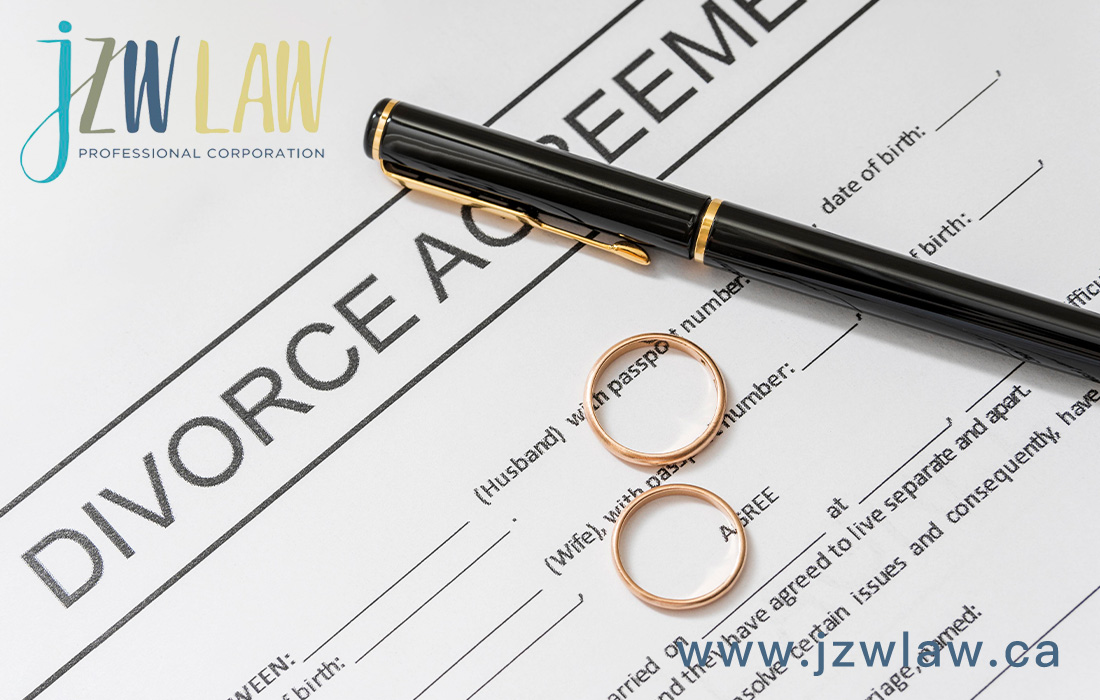
How to define the common property of a couple during divorce? Pay attention to these 5 details of property division
In divorce disputes, the definition and division of marital common property is often the core point of contention. The Family Law Act of Ontario, Canada, has established a property distribution system based on the “community of income during marriage”, but in practice, it is necessary to make a comprehensive judgment based on the type of property, the time of acquisition, and legal exceptions. This article combines Canadian judicial practice to analyze the definition rules and division details of five common types of property, and provide professional legal guidance for the parties.
I. General Principles for Defining Property Acquired after Marriage
According to Ontario law, property acquired by a couple during the marriage (from the date of marriage to the date of separation) is considered common property in principle and must be divided equally upon divorce. “Property” here includes:
- Real estate (such as a house purchased after marriage, investment property)
- Financial assets (bank deposits, stocks, funds, retirement accounts RRSP, etc.)
- Physical assets (vehicles, art, jewelry, etc.)
- Operating assets (company equity, business goodwill, etc.)
Exceptions: The following property is generally not considered community property:
- Separate property existing before the marriage (unless there is a “conversion of property,” see below)
- Property acquired during the marriage by inheritance or gift (unless it is expressly given to both parties)
- Personal injury compensation (non-property damages)
- Property under a prenuptial or postnuptial agreement that is expressly agreed to be personal property
II. Special circumstances in which pre-marital property is converted into common property
If personal property before marriage is “substantially transformed” during marriage, it may be considered as common property. Common situations include:
-
Post-marital joint appreciation of pre-marital property
If a house is purchased by one party before marriage, and both parties jointly repay the loan, pay for renovation costs, or make changes to the property registration (such as adding the spouse’s name) after marriage, the increased value of the house (calculated as the difference between the market value at the time of marriage and the market value at the time of divorce) may be recognized as common property.
▶ Judicial practice: The Ontario Court of Justice made it clear in the Boulanger v. Boulanger case that “passive appreciation” that only repays the mortgage is generally not considered a joint contribution, but if both parties jointly make significant improvements to the property (such as adding floors, renovating and rebuilding), the increased value must be included in the division.
-
Combination of personal property and joint funds of the couple
If the savings before marriage are mixed with the joint income after marriage (such as used for daily household expenses or investment in joint property), it may lose its personal property attributes. It is recommended to manage the pre-marital property through an independent account and keep a clear record of the flow of funds.
III. Rules for the division of intellectual property and operating assets
-
Distribution of Profits from Intellectual Property
The “future income rights” of intellectual property such as copyrights, patents, and trademarks acquired during the marriage are considered common property. For example:
- Royalties from novels written during marriage after divorce
- Royalties for patents applied for during marriage after they are granted
When dividing the assets, professional appraisal is required to determine their value, and the method of “compensating the other party 50% of the value” is usually adopted.
-
Company Equity and Business Interests
– If one party sets up a company during the marriage, the shares are considered joint property in principle and need to be divided after the net assets of the company are assessed.
– If one party holds shares in a company before marriage, and the shares increase in value due to joint labor after marriage (such as participating in company management), the increased value will be considered common property
▶ Key points for practice: The court usually requires the provision of documents such as the company’s financial statements and audit reports, and appoints an independent appraisal agency to determine the equity value when necessary.
IV. Rules for the Recognition and Sharing of Liabilities
The division of common property requires the handling of common debts of the couple at the same time, and the definition rules are as follows:
- Joint debt: debts incurred for the common benefit of the family (such as joint mortgages, children’s education loans, family living overdrafts, etc.), which are borne jointly by both parties in the event of divorce
- Personal debt: Debts incurred by one party in his or her personal name and not used for family life (such as personal consumption loans before marriage, gambling debts, etc.) shall be borne by the debtor.
Segmentation principles:
- First use the common property to repay the common debt, and then distribute the remaining property
- If the joint property is not enough to pay off the debt, both parties shall share the shortfall at a 50% ratio (after assuming joint and several liability to the creditor, they may seek compensation from the other party)
V. Burden of Proof and Key Points on Preservation of Evidence
-
Burden of proof for property claims
The party claiming that a property is personal property must bear the burden of proof and provide the following evidence:
- Proof of the time of property acquisition (such as purchase contract date, deposit record)
- Proof of the source of property (such as inheritance notarization, gift contract)
- Proof that there is no mixing of property (such as separate account statements, property registration information)
-
Key evidence list
▶ It is recommended to prepare the following documents during divorce proceedings:
- List of property of the couple (specifying the name of the asset, time of acquisition, value and proof of ownership)
- Bank statements, investment account statements (last 5 years)
- Real estate and vehicle registration certificates and appraisal reports
- Company financial statements, equity certification documents
- Prenuptial/postnuptial agreement (if any)
concluding remarks
The definition of marital common property involves complex legal rules and factual determination, especially for special property types such as cross-border assets and corporate equity of high-net-worth families, which require comprehensive analysis in combination with specific laws and judicial cases in Canada and Ontario. It is recommended that before initiating divorce procedures, you should entrust a lawyer with dual qualifications in family law and property law to sort out the property, and ensure that your legitimate rights and interests are fully protected through professional evaluation and legal argumentation.
(Legal basis for this article: Sections 4(1), 5(2), and 16 of the Ontario Family Law Act; relevant cases of the Ontario Court of Appeal)
JZW Law has an experienced team of high net worth divorce lawyers. They are fluent in both Chinese and English and provide professional legal services. We specialize in handling complex property division, corporate equity, trusts, overseas assets and other related issues. We provide initial consultation services, and you are welcome to contact us for more information or to schedule a consultation.
最新文章
标签





